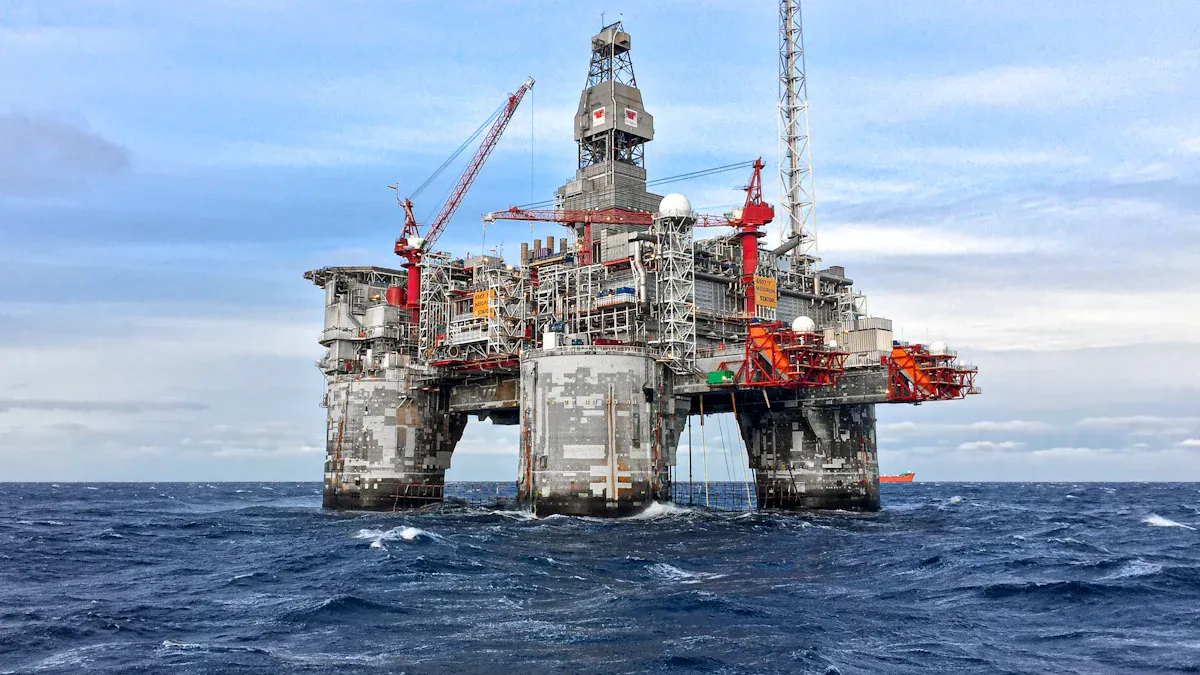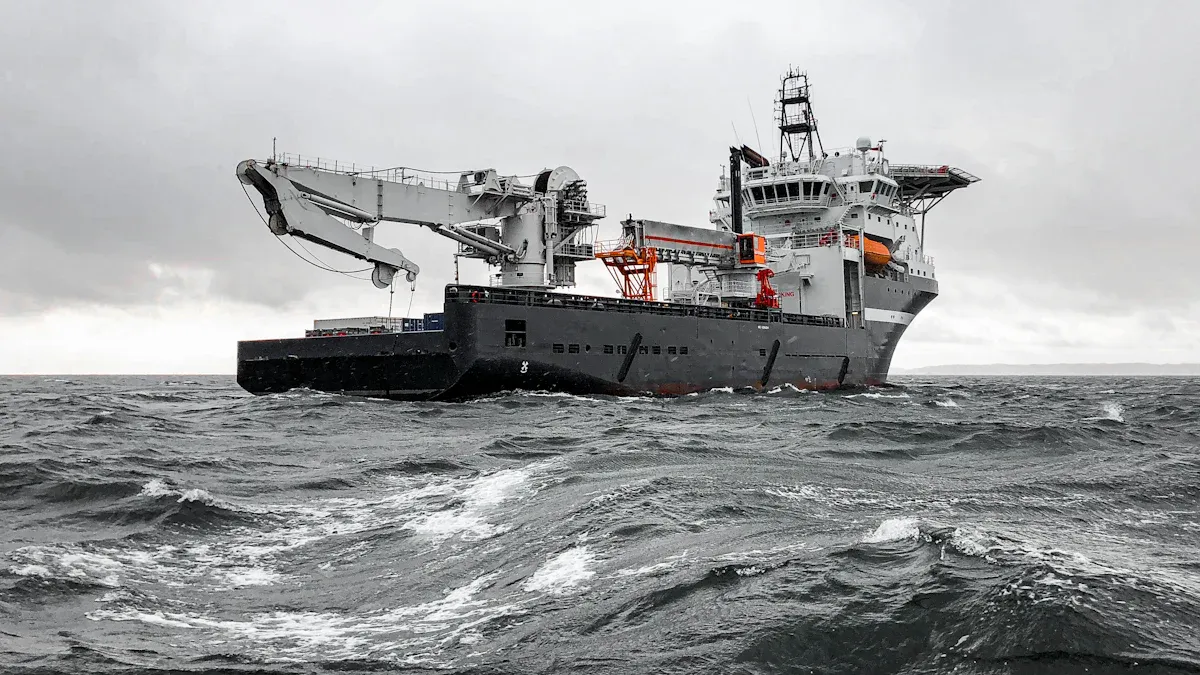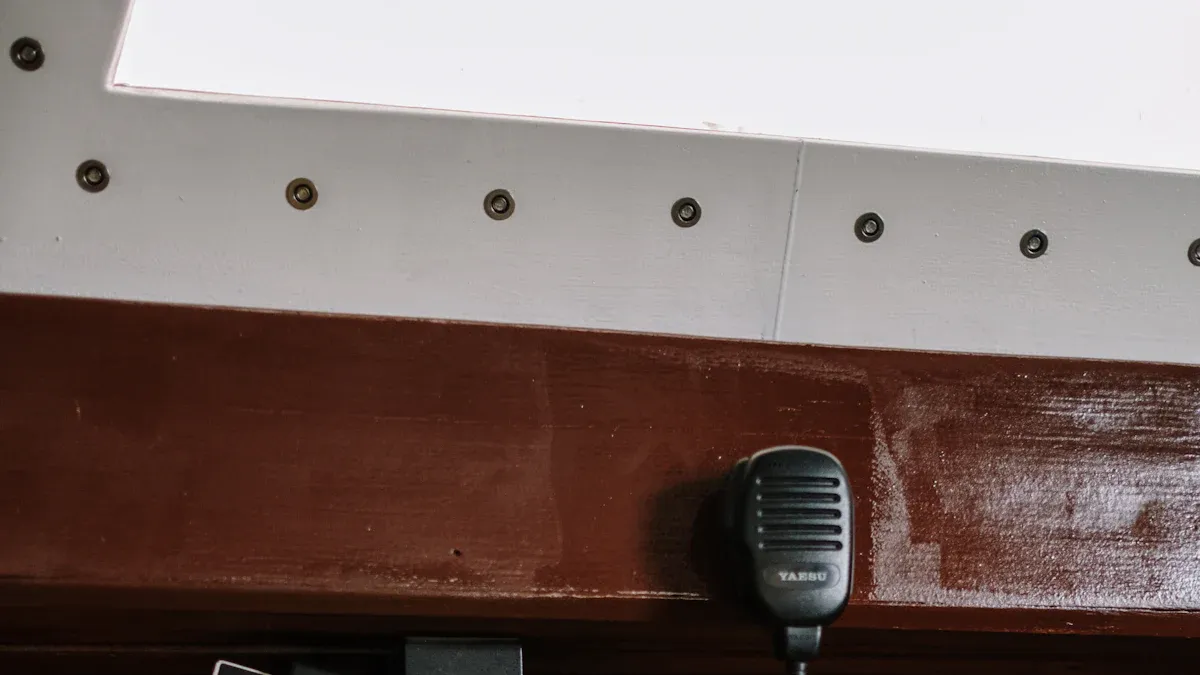
Marine industrial telephones are specifically designed to endure harsh and extreme environments, ensuring reliable communication in settings such as ships, offshore rigs, and hazardous industrial zones. The demand for these devices has surged as industries increasingly adopt advanced technologies. For example, the marine communication market, valued at $1.8 billion in 2023, is projected to grow to $3.2 billion by 2032. This significant growth underscores the need for dependable systems like the analog industrial telephone, mining industrial telephone, and ATEX explosion-proof telephone. These devices, including the marine industrial telephone, are essential for maintaining safety and efficiency in critical operations.
What Are Marine Industrial Telephones?
Definition and Purpose
Marine industrial telephones are communication devices built to withstand the toughest environments. They are specifically designed for use in marine and industrial settings, where extreme weather, high humidity, and hazardous conditions are common. These telephones ensure that workers can stay connected, even in emergencies or remote locations. Their primary purpose is to provide reliable communication for safety, coordination, and operational efficiency.
To understand their role better, it’s helpful to look at the regulations that define their use. For example, the Global Maritime Distress and Safety System (GMDSS) outlines the requirements for communication equipment on ships. Here’s a quick overview:
| Regulation | Description |
|---|---|
| GMDSS | An internationally recognized distress and radio communication safety system mandated by the International Maritime Organization (IMO) under SOLAS. |
| Equipment Requirements | Ships must carry specific equipment including a 406 MHz EPIRB, VHF radio, NAVTEX receiver, SART, and backup power systems. |
| Regulatory Source | Detailed regulations are found in 47 C.F.R. Part 80, specifically Subpart W. |
These guidelines highlight the critical role marine industrial telephones play in ensuring compliance and safety at sea.
Key Features and Design
Marine industrial telephones are not your average communication devices. They are built to handle extreme conditions while maintaining functionality. Here are some of their standout features:
- Durability: These telephones are made from rugged materials that resist corrosion, water, and physical damage. Many models are explosion-proof, making them suitable for hazardous areas like oil rigs.
- Weather Resistance: They are designed to operate in extreme temperatures, high humidity, and even saltwater exposure.
- Advanced Connectivity: Modern versions support satellite communication, ensuring long-range connectivity in remote areas.
- Emergency Features: Many models include features like alarm systems, hands-free operation, and backup power to ensure functionality during critical situations.
Their design focuses on reliability and ease of use. For instance, large buttons and clear audio systems make them practical for workers wearing gloves or operating in noisy environments.
Importance in Harsh Environments
Marine industrial telephones are essential in environments where traditional communication devices fail. On ships, they enable crew members to coordinate navigation, monitor cargo, and respond to emergencies. Offshore oil rigs rely on these devices to maintain constant communication between teams, ensuring safety and efficiency.
Statistical data shows their importance across industries. For example:
| Segment | Market Share (%) | Importance |
|---|---|---|
| Satellite Communication | >30% | Essential for long-range communication in remote areas, ensuring safety and operational efficiency. |
| Commercial Segment | >53% | Critical for navigation, safety, and regulatory compliance in global trade. |
| Shipping Industry Segment | >45% | Dominates the market due to the need for reliable communication for safe navigation and cargo tracking. |
These numbers emphasize how vital marine industrial telephones are for maintaining safety and connectivity in challenging conditions. Without them, industries like shipping and offshore drilling would face significant risks.
Applications of Marine Industrial Telephones in 2025

Use on Ships and Vessels
Marine industrial telephones play a crucial role in ensuring smooth operations on ships and vessels. These devices provide reliable communication between crew members, enabling them to coordinate tasks like navigation, cargo handling, and emergency responses. For instance, during severe weather conditions, these telephones allow the crew to stay connected and make critical decisions in real time. Their durability and weather-resistant features make them ideal for maritime environments, where exposure to saltwater and extreme temperatures is common.
Wireless systems have become increasingly popular on ships, offering seamless connectivity for tasks like monitoring weather updates and managing onboard systems. These systems often integrate with public address systems, ensuring that important announcements reach all crew members promptly. By facilitating clear and uninterrupted communication, marine industrial telephones contribute significantly to the safety and efficiency of maritime operations.
Role in Offshore Oil Rigs
Offshore oil rigs are among the most challenging environments for communication. Workers face harsh conditions, including high humidity, extreme temperatures, and the risk of explosions. Marine industrial telephones are specifically designed to withstand these challenges, ensuring that teams can communicate effectively at all times. Their explosion-proof features and rugged construction make them indispensable tools for maintaining safety on oil rigs.
These telephones also support coordination between onshore and offshore teams. For example, hybrid communication systems enable real-time data sharing and decision-making, ensuring that operations run smoothly. Whether it’s managing drilling activities or responding to emergencies, marine industrial telephones provide the reliability needed in such high-stakes environments.
Industrial Applications in Hazardous Areas
In industrial settings, especially those classified as hazardous areas, communication is vital for both safety and productivity. Facilities like chemical plants, mining sites, and manufacturing units often span large areas, making it essential to have a robust communication system in place. Marine industrial telephones excel in these environments due to their ability to operate under extreme conditions.
These devices ensure uninterrupted communication across large facilities, allowing workers to coordinate tasks efficiently. For instance, during maintenance activities or equipment failures, quick communication can prevent accidents and minimize downtime. By enhancing connectivity and ensuring safety, marine industrial telephones have become a cornerstone of industrial operations in 2025.
Note: The versatility of marine industrial telephones makes them suitable for a wide range of applications, from maritime to industrial settings. Their ability to adapt to different environments highlights their importance in modern operations.
Advancements and Benefits of Marine Industrial Telephones in 2025

Technological Improvements in Durability and Connectivity
In 2025, marine industrial telephones have become more robust than ever. Manufacturers now use advanced materials that resist corrosion, extreme temperatures, and even prolonged saltwater exposure. These improvements ensure the devices last longer, even in the harshest environments. Connectivity has also taken a leap forward. Many models now integrate with satellite systems, providing seamless communication over vast distances. This feature is especially useful for vessels traveling through remote areas or offshore rigs operating far from land.
Wireless technology has also made its mark. Modern marine industrial telephones often include Wi-Fi or Bluetooth capabilities, allowing them to connect with other onboard systems. This integration helps streamline operations and ensures that teams stay connected without interruptions.
Enhanced Safety Features for Emergency Situations
Safety remains a top priority for marine industrial telephones. In 2025, these devices come equipped with advanced emergency features. For example, many models now include built-in GPS tracking, enabling quick location identification during emergencies. Some telephones also feature automatic distress signals that activate when certain conditions are met, such as sudden impacts or extreme tilts on a vessel.
Another innovation is the inclusion of noise-canceling technology. This ensures clear communication even in noisy environments like oil rigs or engine rooms. These safety enhancements make marine industrial telephones indispensable for protecting lives and preventing accidents.
Contribution to Operational Efficiency and Productivity
Marine industrial telephones are not just about safety—they also boost productivity. Their reliable communication capabilities allow teams to coordinate tasks more effectively. For instance, workers on a ship can quickly relay updates about cargo handling or navigation. On offshore rigs, these devices help teams manage drilling operations and share real-time data with onshore offices.
The integration of smart features, like voice-activated commands, further enhances efficiency. Workers can operate the devices hands-free, allowing them to focus on their tasks. By improving communication and streamlining workflows, marine industrial telephones contribute significantly to operational success.
Marine industrial telephones have become indispensable for communication in extreme environments. Their advanced features ensure safety and efficiency in operations. The shift to hybrid communication models highlights the need for real-time data exchange and interoperability. Strategic partnerships also play a key role in addressing challenges and driving innovation.
| Evidence Description | Key Insights |
|---|---|
| Transition from legacy systems to hybrid models | Upgrading infrastructure enhances operational efficiency and reduces risks. |
| Importance of system interoperability | Integrated communication supports real-time data exchange and agility. |
| Need for strategic partnerships | Collaboration fosters innovation and addresses emerging market challenges. |
FAQ
What makes marine industrial telephones different from regular phones?
Marine industrial telephones are built for extreme environments. They resist water, corrosion, and physical damage, ensuring reliable communication where regular phones would fail.
Can marine industrial telephones work during power outages?
Yes, many models include backup power systems. These ensure uninterrupted communication during emergencies, making them essential for safety in critical operations.
Are marine industrial telephones hard to install?
Not at all! Most models come with user-friendly installation guides. Some even offer plug-and-play features, simplifying setup for industrial and marine environments.
Tip: Always check compatibility with your existing communication systems before purchasing a marine industrial telephone.


